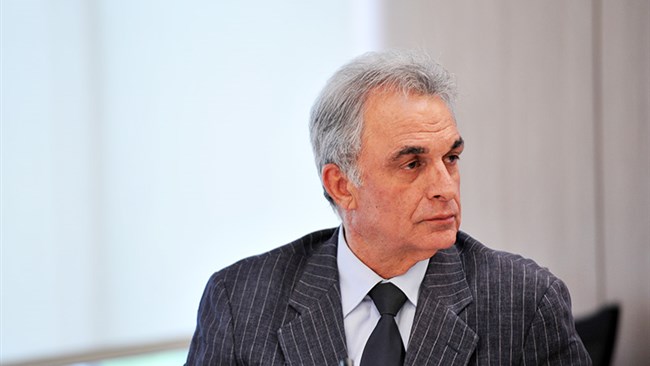Italy Has Long Way to Restore Pre-Sanctions Ties

EghtesadOnline: Trade with Italy is being restored slower than expected following the removal of international sanctions against Iran over its nuclear program, reads an opinion piece written by Iranian co-chair of Iran-Italy Chamber of Commerce in the news portal of Tehran Chamber of Commerce, Industries, Mines and Agriculture.
Ahmad Pourfallah added that trade between Iran and Italy stood at €7.7 billion a decade ago. The figure fell to €1.4 billion over a six-year period and the slowdown remained stuck for three years.
The unraveling of sanctions regime marked the end of the downtrend in the two countries’ economic relations. Following the Joint Comprehensive Plan of Action [the formal name of the nuclear pact Iran signed with major powers], several Italian delegations, including representatives of their private sector, diplomats and government officials, visited Iran.
Italy’s Deputy Minister for Economic Development Carlo Calenda headed a 370-strong trade delegation that comprised representatives of key Italian companies and banking groups to Tehran a few months after JCPOA was signed in July 2015, Financial Tribune reported.
Later in January 2016, President Hassan Rouhani paid a visit to Rome—the first foreign visit by the Iranian president after the implementation of the nuclear pact. About €17 billion worth of deals were signed during the visit. Three months later, former Italian prime minister, Matteo Renzi, led a 250-strong business delegation to the Iranian capital in April 2016.
“Hopes of improving Iran-Italy trade have been given a boost in recent years, but the restoration of economic ties has not been fully realized,” Pourfallah said.
Although Iranian banks were barred from international transaction system Swift under sanctions and well after their removal for quite some time, the two countries continued their efforts to boost bilateral trade.
“In fact, trade between the two countries has improved by €500 million over the past three months. Many second- and third-tier Italian banks are working with Iranian banks and Italian top-tier banks are likely to follow suit in the not-too-distant future,” he said.
The Iranian official said Italy is the biggest buyer of Iranian oil and the European country is Iran’s top trading partner in the European Union.
“Italy is the only country in the European Union with whom we actually have a trade surplus. SACE, the Italian export credit agency was the first to cover trading with Iran by up to €5 billion,” he said.
According to Eurostat’s data shared with Financial Tribune, Iran exported €2.77 billion worth of goods to the European Union in the first quarter of 2017, registering a sixfold rise compared with the preceding year’s corresponding period.
Italy was the biggest importer from Iran in the first quarter among all European states, as it bought €807.4 million worth of Iranian goods during the period. And Iran imported €2.52 billion worth of commodities from the European Union during the same period, recording a %56 rise year-on-year.
Germany topped the list of exporters to Iran, shipping €694.4 million worth of goods to the Islamic Republic in three months. France came second with €461 million and Italy followed with €418.6 million.
“Economic negotiations are underway with Italians in different fields, ranging from preliminary agreements to memoranda of understanding. But we have repeatedly stressed the fact that we are not willing to go back. In the past, Iran was the consumer of products but now the country is planning to make joint investments with producer countries to help create jobs for the youth. Given the prevailing recession in Europe, Iran is an attractive market for them,” Pourfallah said.
Among major deals reached between Iran and Italy after the nuclear deal, perhaps the most notable include a €1.2 billion agreement signed last month by the Islamic Republic of Iran Railways and its Italian counterpart for establishing a high-speed railroad between the Iranian cities of Qom and Arak.
French-Italian light aircraft manufacturer ATR signed a €1 billion ($1.1 billion) agreement in February 2016 with Iranian flag carrier Iran Air to sell 20 short-haul ATR 72-600 planes, with options on another 20 planes. Iran has so far received four of those planes.


